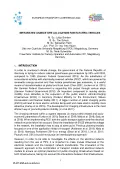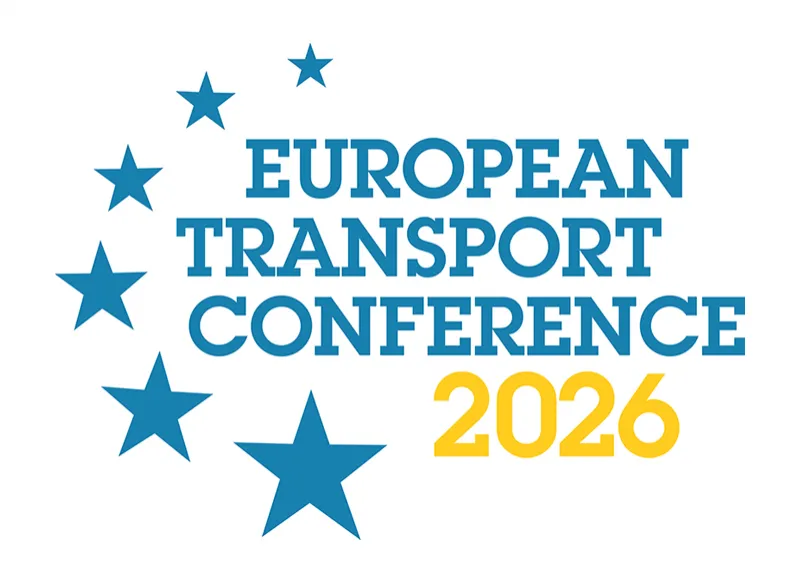-
Past ETC Papers

Browse, search and view papers from the past AET Conferences.
-
Members' Area

AET promotes networking and exchange of ideas, information and opportunities amongst members.
Conference Papers 2020
Online
ETC Conference Papers 2020
INTEGRATED CHARGE SITE ALLOCATION FOR ELECTRIC VEHICLES
Seminar
Day 2 (10 Sep 2020), Session 4, Modelling Fleets and Aspects of Electric Vehicle Rollout, 10:00 - 12:00
Status
Accepted, documents submitted
Submitted by / Abstract owner
Julius Brinken
Authors
M.Sc. Julius Brinken (julius.brinken@ovgu.de)
Institute of Logistics and Material Handling Systems (ILM)
Otto von Guericke University Magdeburg, Germany
Tim Schulz (tim.schulz@ovgu.de)
Institute for Logistics and Material Handling Systems (ILM)
Otto von Guericke University Magdeburg, Germany
M.Sc. Sebastian Helm (sebastian.helm@ovgu.de)
Institute of Electric Power Systems (IESY)
Otto von Guericke University Magdeburg, Germany
M.Sc. Niels Schmidtke (niels.schmidtke@iff.fraunhofer.de)
Fraunhofer Institute for Factory Operation and Automation IFF, Magdeburg, Germany
Short abstract
The paper presents an integrated planning methodology for charging stations for electric vehicles. Besides the presentation of the first results, the advantages and challenges of the interdisciplinary approach are discussed.
Abstract
In the era of combating climate change it became more than necessary to transform all sectors into an ulta-low carbon emission economy. Despite improvements in efficiency, the transportation sector has hardly made any contribution to reducing its emissions due to the steady increasing number of vehicles [1]. The substitution of conventional vehicles by electric vehicles (PHEVs & BEVs) offers the opportunity to decarbonise the transport sector, provided that renewable energy sources are used [2;3]. The implementation of a public charging infrastructure is contributing towards measures of this subsition. The aim is to diminish obstacles associated with electromobility, such as limited range and few charging options [4].
The needs for charging depend on traffic-related and socioeconomic factors [5;6], therefore charging infrastructure connects power grid and traffic events.Previous planning approaches regarding public charging infrastructure mainly consider one of the application areas, either traffic or energy. Studies focusing on traffic use algorithms, such as the maximum coverage location problem algorithm, a modified sweep algorithm or evaluation matrices to identify optimal locations [4;6;7]. These approaches are mainly considering the benefits for users and the costs for providers, while the effects on the electrical grid are only marginally addressed. Research with an electrotechnical focus concentrate on the usage of renewable energy sources and load management [8]. The research project "linking infrastructure - placement and operation of charging stations from a transport and energy network perspective" pursues an interdisciplinary approach. With its holistic planning approach, it promises better solutions for the allocation of charging sites.
The methodology for site optimization is divided into three steps. The first step is a traffic model, that maps the traffic flows within the investigated area. The model is created using indicators from the national transport survey, structural data and socio-demographic data of the examined districts. An approach to determine public charging needs derived from the modelled traffic flows is presented in this paper. In the second step, a simulative replication of the current low-voltage electrical grid is carried out, using information from the regional energy supplier. Different scenarios regarding load and energy generation are used to make detailed load flow calculations of all possible scenarios, taking into account voltage band violations, and line and transformer overload. The third step includes an evaluation and prioritisation of possible locations for charging sites through linking these two models together. Not only the methodolgy, including its advanteges and challenges, but also the results of the first two steps, will be presented in the paper.
In addition, this paper outlines the methods and ideas for the development of future electromobility scenarios, in regard to the integration of the traffic, the electrical grid model, and the charging and operation strategy development.
The model basis for this project is a medium-sized town in an urban area located in a rather structurally weak region (Burg near Magdeburg). At present there are comparatively few electric vehicles in the investigated area. This can be changed with the development of a public charging infrastructure, therefore a constant exchange with the local authorities and energy suppliers was established. One of the central aims of this project is to establish a comprehensive base for transferring our approach to similar areas of study, helping cities to develop an overall concept for public charging infrastructure.
Literature
[1] European Environmental Agency (2019): Greenhouse gas emissions from transport in Europe.
[2] Chan, Ching Chuen (2007): The State of the Art of Electric, Hybrid, and Fuel Cell Vehicles.
[3] Jochem, Patrick; Babrowski, Sonja; Fichtner, Wolf (2015): Assessing CO2 emissions of electric vehicles in Germany in 2030.
[4] Li, Ying; Zhang, Pengwei; Wu, Yifan (2017): Public recharging infrastructure location strategy for promoting electric vehicles. A bi-level programming approach.
[5] Funke, Simon Árpád; Sprei, Frances; Gnann, Till; Plötz, Patrick (2019): How much charging infrastructure do electric vehicles need? A review of the evidence and international comparison.
[6] Niels, Tanja; Gerstenberger, Marcus; Bogenberger, Klaus; Hessel, Christoph; Gigl, Andrea; Wagner, Katrin (2018): Model-based optimization of public charging infrastructure planning in rural areas.
[7] Bürgerschaft der freien Hansestadt Hamburg (2014): Masterplan Ladeinfrastruktur und Stellungnahme des Senats zu dem Ersuchen der Bürgerschaft vom 11. Dezember 2013 „An Erfolge anknüpfen und Elektromobilität weiterentwickeln“.
[8] Schafmeister, K.; Friedrich, H.; Mehrmann, F.; Albrecht, M. (2016): EmiLippe. Zusammenführung von Elektromobilität und Erneuerbare Energie für intelligente Wirtschaftsverkehre im Ländlichen Raum durch Informations- und Kommunikationstechnologie.
Programme committee
Transport Models
Topic
Climate change
Documents:

Association For
European Transport
Forester House
Doctors Lane
Henley-in-Arden
Warwickshire, UK
B95 5AW
+44 (0) 15 64 793552
VAT number: 710 1866 64
Conference Supporters & Endorsers




Legal Entity
The Association for European Transport is registered as an Association ('vereniging') with the Chamber of Commerce for Haaglanden in The Netherlands under company number 27170096.
Built on Zenario




